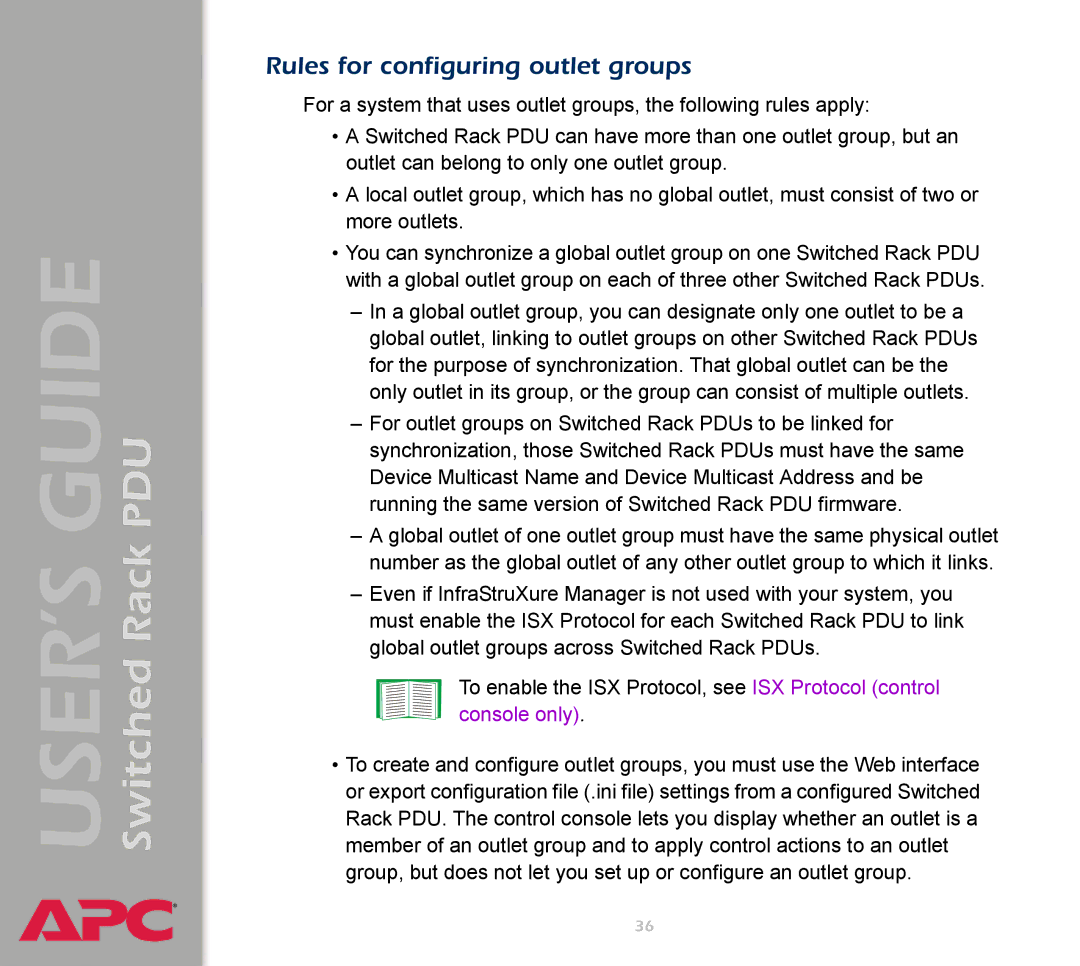
Switched Rack PDU
USER’S GUIDE
®
Rules for configuring outlet groups
For a system that uses outlet groups, the following rules apply:
•A Switched Rack PDU can have more than one outlet group, but an outlet can belong to only one outlet group.
•A local outlet group, which has no global outlet, must consist of two or more outlets.
•You can synchronize a global outlet group on one Switched Rack PDU with a global outlet group on each of three other Switched Rack PDUs.
–In a global outlet group, you can designate only one outlet to be a global outlet, linking to outlet groups on other Switched Rack PDUs for the purpose of synchronization. That global outlet can be the only outlet in its group, or the group can consist of multiple outlets.
–For outlet groups on Switched Rack PDUs to be linked for synchronization, those Switched Rack PDUs must have the same Device Multicast Name and Device Multicast Address and be running the same version of Switched Rack PDU firmware.
–A global outlet of one outlet group must have the same physical outlet number as the global outlet of any other outlet group to which it links.
–Even if InfraStruXure Manager is not used with your system, you must enable the ISX Protocol for each Switched Rack PDU to link global outlet groups across Switched Rack PDUs.
To enable the ISX Protocol, see ISX Protocol (control console only).
•To create and configure outlet groups, you must use the Web interface or export configuration file (.ini file) settings from a configured Switched Rack PDU. The control console lets you display whether an outlet is a member of an outlet group and to apply control actions to an outlet group, but does not let you set up or configure an outlet group.
36
